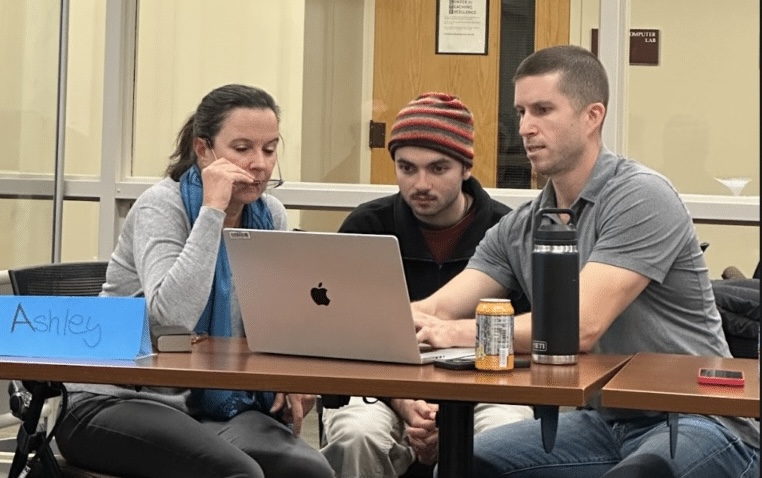What would it feel like to bring students more directly into the conversation about AI in education? That’s what we wondered last fall when we created the AI student Advisors working group to parallel our faculty working group.

We have sensed for a while that one of the biggest risks for AI in education is the effect it could have on the relationship between professors and students. This became obvious to us the first time we heard a student say she had begun putting misspellings and grammatical errors into her paper to avoid being accused of cheating with AI.
Hearing this, I was struck by how much we miss when we don’t give students a chance to talk openly about their day-to-day experiences of learning.
My co-faciliators (Noël Ingram, Claire Angus, and Kyle Fidalgo) and I learned quite a bit from spending the year with ten BC students who were generous enough to stick with us as we experimented with this new format. It was a small sample size, obviously, but we were impressed by how much we could learn simply by inviting a small group of students to share their experiences. You can read Claire’s summary of our findings in this report.
This summer, the AI Advisors Summer Internship is a program meant to build off the work of the AI Advisors working group. I’m lucky to have two smart and thoughtful rising juniors – Tobin Ting and Sara Bufi – with me this summer to explore ways student voices and perspectives could play a more deliberate role in the AI conversation at BC.
I’m also happy to be collaborating with Belle Liang’s Purpose Lab to support Toby and Sara as they interview fellow students about their experiences of AI in their Boston College education. In particular, Elisa Liang has been a huge help in training them in qualitative research methods and shepherding us through the IRB process. We’re excited to start interviewing this week, and we look forward to seeing what insights might emerge by the end of the summer.
It’s often hard to know what we can do amid the rapid disruption AI is causing in education. In our experience, creating spaces for open dialogue and experimentation among students, faculty, and staff has felt like a small, concrete action we could take.
This fall, we’re hoping to find new ways for people to work together around AI. We have a hunch things will go better if we keep students in the mix.